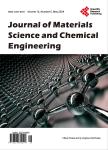Characterization and Evaluation of Bond Strength of Dental Polymer Systems Modified with Hydroxyapatite Nanoparticles
Characterization and Evaluation of Bond Strength of Dental Polymer Systems Modified with Hydroxyapatite Nanoparticles作者机构:Department of Dentistry Federal University of Vales do Jequitinhonha and Mucuri Diamantina Brazil Department of Dentistry Federal University of Vales do Jequitinhonha and Mucuri Diamantina Brazil Advanced Biomaterial Center-BioMat UFVJM Diamantina Brazil Department of Dentistry Federal University of Vales do Jequitinhonha and Mucuri Diamantina Brazil Advanced Biomaterial Center-BioMat UFVJM Diamantina Brazil Institute of Science and Technology UFVJM Diamantina Brazil
出 版 物:《Journal of Materials Science and Chemical Engineering》 (材料科学与化学工程(英文))
年 卷 期:2013年第1卷第7期
页 面:13-23页
学科分类:1002[医学-临床医学] 100214[医学-肿瘤学] 10[医学]
主 题:Nanostructures Composites Mechanical Properties Fracture
摘 要:The study modifies an adhesive system with hydroxyapatite nanoparticles as load, characterizing it and evaluate the effectiveness of its bond to dental structure. The middle thirds of healthy premolar tooth crowns were obtained, and each crown was sectioned vertically, resulting in two sections. The sections were divided into ten groups (n = 15), in which resin composite restorations were simulated: (G1E and G1D) conventional adhesive system (SAC);(G2E and G2D) SAC modified with HAP;(G3E and G3D) Primer modified with HAP;(G4E and G4D) monocomponent adhesive system;(G5E and G5D) self-etching adhesive system. The specimens were submitted to the microshear test and characterization technique. There was statistically significant difference (Kruskal-Wallis) between the groups (p 0.01). G3 presented the highest bond strength to enamel (64.40 MPa, ±7.36) and dentin (39.59 MPa, ±21.46). The majority of specimens were found adhesive fractures. Bond strength to enamel and dentin of the primer modified with HAP of SAC showed higher values.



